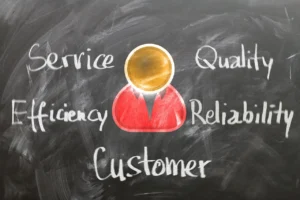
Introduction: Building Financial Freedom
Time is the most precious commodity we have. With only 24 hours in a day, wouldn’t it be amazing to make a living without trading your time for money? This is the promise of passive income ideas earning money while you sleep, travel, or spend time doing what you love. It’s not just a financial goal; it’s a lifestyle change that prioritizes freedom and flexibility.
In this guide, we’ll explore everything you need to know about common myths about passive income, its benefits and how you can start creating your own streams today.
What is Passive Income?
Passive income refers to earnings generated with little to no daily effort after an initial investment of time, money, or resources. Unlike active income where you exchange your time for money passive income allows you to earn consistently without being directly involved in day-to-day operations.
Examples of passive income include:
- Rental properties
- Dividends from investments
- Royalties from books or creative works
- Dropshipping or e-commerce automation
- Affiliate marketing
- Online courses or digital products.
Active Income vs. Passive Income: Understanding the Key Differences and Debunking Common Myths about Passive Income
When it comes to generating revenue, there are two primary types of income: active income and passive income. Each offers unique advantages and requires different levels of effort. Understanding the differences between the two can help you decide which path is best suited for your financial goals.
What is Active Income?
Active income refers to income that requires ongoing effort to generate. This includes jobs, freelancing, or providing services where you are paid either by the hour or per task completed. Examples of active income include working as a salaried employee, offering freelance writing services, or providing consulting services.
With active income, there is a direct correlation between the time you spend working and the money you earn. If you stop working, the income stops too. In other words, active income demands your time and effort to keep earning. While it can be a reliable way to make money, it often limits your ability to scale or gain financial freedom since you are trading time for money.
What is Passive Income?
On the other hand, passive income allows you to decouple your time from your earnings. Once you set up the system or investment that generates passive income, you don’t need to actively work on it every day to continue earning. Examples of passive income include income from rental properties, royalties from books or music, affiliate marketing, or investments that generate dividends.
The key difference with passive income is that after the initial setup, the income continues to flow with minimal maintenance. You may need to monitor or occasionally adjust the system, but it doesn’t require constant involvement to generate revenue. This type of income offers significant potential for financial independence, as it frees up your time and reduces the need for active labor.
Why Shift to Passive Income?
There are several compelling reasons why many people choose to focus on creating passive income streams.
- Time Freedom
One of the biggest advantages of passive income is the time freedom it offers. With active income, your schedule is often dictated by your work hours. But with passive income, you can spend more time on what truly matters—whether that’s spending time with family, pursuing hobbies, or focusing on personal growth. By creating passive income streams, you free yourself from the constraints of a 9-to-5 job. - Financial Security
Passive income provides a level of financial security by diversifying your income streams. When you rely on a single paycheck from a job, your financial well-being is tied to your employer’s stability. However, with passive income, you can reduce this reliance. Having multiple sources of income can help you weather financial downturns and reduce the stress of relying on a single income stream. - Stress Reduction
Passive income can lead to reduced stress, as it eliminates the constant worry about bills, job stability, and earning enough to meet your needs. With passive income, your money works for you, allowing you to enjoy a more relaxed and secure lifestyle. As you build passive income streams, you gain more control over your financial future. - Location Independence
Another significant benefit of passive income is the potential for location independence. With active income, you are typically tied to a specific location—whether it’s an office or a client’s location. But with passive income, you can earn money from anywhere in the world. Whether you’re traveling, living abroad, or working from home, passive income allows you the flexibility to live and work wherever you choose.
Common Myths About Passive Income
While passive income sounds enticing, there are several common myths about passive income that can prevent people from pursuing it. Let’s debunk these myths so you can make informed decisions about your financial future.
- Myth 1: Passive Income is Easy Money
While passive income can provide ongoing revenue with minimal effort once it’s set up, it requires significant upfront work. Building a passive income stream often involves research, planning, and sometimes a financial investment. Whether it’s creating an online course, writing a book, or investing in real estate, creating passive income requires time and effort to lay the groundwork. - Myth 2: You Don’t Need to Work Once Passive Income is Established
Many people believe that once they set up a passive income stream, they can sit back and relax. While passive income requires less active involvement than active income, it’s not entirely hands-off. You may need to monitor your investments, update your content, or optimize your systems periodically to ensure they continue generating revenue. However, the key is that your time isn’t directly tied to your earnings. - Myth 3: Passive Income is Only for the Wealthy
Another common misconception is that passive income opportunities are only available to the wealthy. In reality, anyone can create passive income streams, even with limited resources. There are many affordable options, such as starting a blog, creating digital products, or investing in dividend-paying stocks. With determination and the right strategy, anyone can begin building passive income regardless of their starting point. - Myth 4: Passive Income is Unreliable
Some people think passive income is unreliable or unsustainable, but when done correctly, it can be a stable and consistent source of income. The key is to build diverse passive income streams. By combining multiple sources of passive income, you can create a more stable financial foundation that isn’t dependent on a single income source.
Understanding the differences between active income and passive income is essential for making informed decisions about your financial future. While active income requires continuous effort, passive income offers more freedom and flexibility, allowing you to earn money without constantly trading time for dollars. By shifting toward passive income, you can achieve greater financial security, reduce stress, and enjoy more time for the things that truly matter.
While there are many common myths about passive income, it’s important to recognize that building a sustainable passive income stream requires effort, dedication, and smart planning. By debunking these myths and understanding the true nature of passive income, you can confidently work toward achieving financial independence and a more fulfilling lifestyle

The Top Benefits of Passive Income and Debunking Common Myths About Passive Income
Passive income is an enticing financial concept that promises the freedom to earn money with minimal active effort. Whether it’s through investments, digital products, or other income-generating ventures, passive income has become a popular goal for many. However, there are several common myths about passive income that may mislead individuals. To help you better understand the benefits of passive income and how to build it, we’ll explore both the advantages and the truths behind some of these misconceptions.
Top Benefits of Passive Income
- Reduces Stress and Anxiety
Financial uncertainty is one of the biggest stressors in life. Many people worry about losing their job, facing medical emergencies, or having enough to cover unexpected expenses. Passive income acts as a safety net, providing a steady income stream that continues to flow even during difficult times. Whether it’s from rental income, dividends, or an online business, passive income allows you to navigate financial setbacks with greater ease, ultimately reducing stress and anxiety.
- Provides Financial Freedom
Imagine a life where you no longer live paycheck to paycheck. Passive income allows you to cover your regular expenses and gives you the freedom to pursue what truly excites you—whether it’s starting a passion project, spending more time with family, or traveling the world. The ability to earn without constantly trading hours for dollars frees you from the constraints of a traditional job, allowing you to design your ideal lifestyle. Financial freedom is not a distant dream; passive income can help you get there.
- Encourages Wealth Growth
One of the most powerful benefits of passive income is its ability to help you grow your wealth over time. The earnings you generate from passive income streams can be reinvested into more income-generating opportunities, creating a snowball effect that accelerates your wealth accumulation. For example, income from rental properties can be reinvested in additional properties, or dividend payouts can be reinvested in more stocks. Over time, compounding these income streams can lead to significant financial growth with little additional effort on your part.
- Offers Location Independence
With passive income streams like online businesses or investments, you can live and work from virtually anywhere in the world. Whether you’re on a tropical beach, a bustling city, or a quiet countryside, passive income offers unparalleled location independence. As long as you have an internet connection, you can manage your income streams, monitor investments, and even manage an online business without being tied to a specific location. This flexibility makes passive income highly attractive for those seeking a nomadic lifestyle or simply desiring more freedom in their daily lives.
How to Build Passive Income
Building passive income streams requires an upfront investment of time, effort, and sometimes capital. However, once your systems are set up and running smoothly, the income continues to flow with minimal ongoing effort. Here’s how you can start building your passive income:
- Choose the Right Income Stream
The first step in building passive income is selecting the right income stream that aligns with your skills, resources, and interests. There are many ways to generate passive income, and it’s important to pick one that suits your lifestyle and financial goals. Here are some options:
- Real Estate Investments: Earn rental income by purchasing and leasing properties.
- Stock Market Dividends: Invest in dividend-paying stocks for regular payouts.
- Online Courses: Create and sell online courses on platforms like Udemy or Teachable.
- Affiliate Marketing: Promote other people’s products and earn commissions for each sale.
- E-books and Royalties: Write and publish digital books on platforms like Amazon Kindle to earn royalties.
- Invest Time and Effort Initially
While passive income ultimately becomes hands-off, the initial setup is crucial. Whether you’re creating a product, building a website, or setting up a real estate portfolio, the early stages require significant time and effort. Research opportunities, create high-quality content or products, and set up automation systems to ensure your income stream runs efficiently. The work you put in initially is the foundation for your long-term success.
- Leverage Technology
Technology can play a major role in automating and managing your passive income streams. Use tools and software that streamline the process. For example, email marketing platforms can help you automate affiliate sales, property management software can simplify real estate operations, and e-commerce platforms like Shopify can help you run a dropshipping business. The right technology can save you time and effort, allowing you to focus on scaling your income rather than managing daily tasks.
- Diversify Your Income Streams
Relying on a single passive income stream can be risky. Market fluctuations or changes in consumer demand could affect one income stream, leaving you vulnerable. Diversify your efforts by building multiple passive income streams to ensure stability. For example, you could combine real estate investments with online businesses and affiliate marketing. Having several income sources reduces the risk of relying on one method and ensures a more reliable cash flow.
- Outsource Tasks
As your passive income streams grow, consider outsourcing tasks to free up your time. For instance, hire a virtual assistant to manage your social media accounts or respond to customer inquiries. You can also hire freelancers for content creation, website maintenance, or other administrative tasks. Outsourcing allows you to focus on higher-level strategies and scale your business without becoming bogged down in daily operations.
Common Myths About Passive Income
Despite its benefits, there are several common myths about passive income that can deter people from pursuing this wealth-building strategy. Let’s clear up these misconceptions:
- Myth: “Passive Income Requires No Work”
One of the biggest myths about passive income is that it requires no work at all. While it’s true that passive income can become hands-off once established, creating a passive income stream takes significant upfront effort. Whether you’re creating an online course, writing a book, or setting up an investment portfolio, each of these income streams requires time, research, and planning. Once they are set up, they may require minimal maintenance, but don’t expect to achieve financial success without initial hard work.
- Myth: “You Need a Lot of Money to Start”
Another misconception is that passive income requires a large initial investment. While some methods, such as real estate or stock market investing, may require significant capital, there are plenty of ways to start generating passive income with little to no money. Starting a blog, launching an affiliate marketing campaign, or selling digital products can be done with a minimal upfront investment. Creativity, resourcefulness, and knowledge can be more important than a hefty financial commitment.
- Myth: “It’s a Get-Rich-Quick Scheme”
Passive income is not a quick-fix solution to get rich overnight. Building reliable, sustainable income streams takes time and consistency. For example, affiliate marketing may require months of content creation and audience building before you start seeing returns. Similarly, real estate investing or creating an online course may take time before they become profitable. Approach passive income with patience and view it as a long-term strategy for building wealth rather than a fast-track route to riches.
Challenges of Passive Income
While the benefits of passive income are clear, it’s important to acknowledge the challenges as well. These include:
- Initial Effort: Setting up a passive income stream takes significant time and resources in the beginning. The more time you invest upfront, the greater the potential returns over time.
- Market Risks: Passive income methods such as investments are subject to market volatility. Be prepared for fluctuations and risks associated with certain income streams, particularly in the stock market or real estate.
- Consistency: Some passive income streams require regular updates or adjustments to stay profitable. For example, maintaining an affiliate marketing website may require fresh content or optimization over time.
Understanding the common myths about passive income is crucial for setting realistic expectations and building successful income streams. While passive income offers numerous benefits, such as financial freedom, reduced stress, and wealth growth, it requires effort, time, and smart planning to build. By debunking these myths and focusing on strategies that align with your skills and resources, you can start building sustainable passive income that will bring financial security and independence over time.
FAQs About Common Myths About Passive Income
- What is the best passive income idea for beginners?
Affiliate marketing and creating digital products are great options for beginners as they require minimal upfront costs and can be scaled easily.
- How long does it take to build a reliable passive income stream?
It depends on the method. Some, like dividend investing, may take years to yield significant returns, while others, like selling an e-book, can start generating income in weeks.
- Do I need to quit my job to build passive income?
Not at all! You can build passive income streams alongside your job and transition once your earnings are sufficient.
- Can passive income really replace a full time salary?
Yes, but it requires effort, strategic planning, and diversification. Many people have replaced their 9-to-5 income with passive income sources.
Conclusion: common myths about passive income
Passive income is more than just a financial strategy it’s a lifestyle choice that prioritizes time freedom and financial security. Whether you’re looking to supplement your active income or achieve complete financial independence, passive income streams can help you reach your goals.
Start small, stay consistent, and watch your efforts pay off over time. The journey to financial freedom begins today. Take the first step!


































